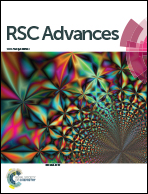Effect of back mixing on thin-layer drying characteristics of sewage sludge by the appropriate foaming pretreatment
Abstract
Herein, we report the creative combination of foaming and back mixing. Back mixing was simulated by the addition of dried foamed sludge (DFS) to raw sludge. Different ratios of (DFS + CaO), DFS shape and dosing sequence were investigated on the influence of sludge foamability and drying efficiency. Experimental results indicate that back mixing has positive effects on sludge foaming and sludge foam stability. Moreover, CaO is still dominant in the sludge foam. The best addition ratio is 10 g DFS + 10 g CaO for 1 kg of fresh sludge with an optimal dosing sequence of first CaO followed by DFS after 5 min. In addition, foam-mat drying for dewatered sludge is not greatly subjected to the DFS shape. During foam-mat drying, a high drying rate appears at a high foam density (>0.70 g cm−3). The foamed sludge of 0.80 g cm−3 has the fastest drying speed at 30 °C, whereas the best drying density is 0.90 g cm−3 at 50 °C. Moreover, the drying rates of foamed sludge were higher when the temperature was increased from 30 °C to 50 °C. In addition, mathematical modelling results demonstrate that the Logistic model is the most adequate model to describe the entire convective drying of thin layer sludge under the best drying density both at 30 °C and at 50 °C.


 Please wait while we load your content...
Please wait while we load your content...